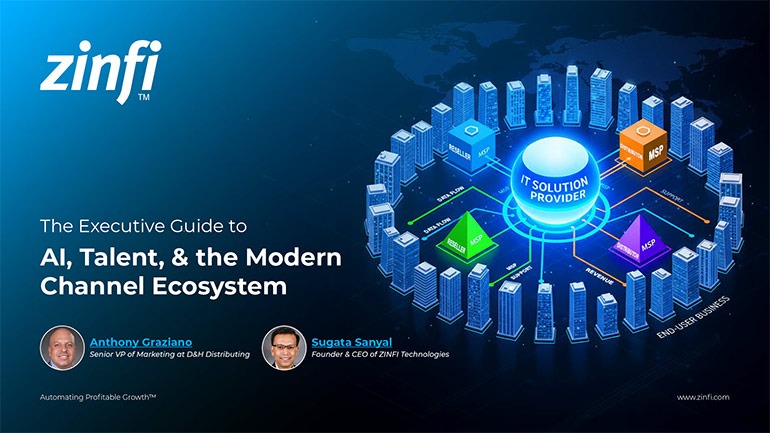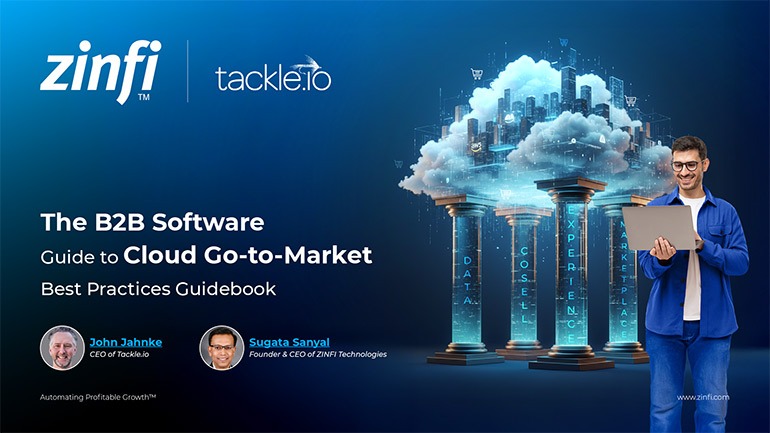Best Practices Articles

Channel Marketing Software In the Remote World
The world has been on a rapid digitization trend over the past few decades, but 2020 rocket-fueled the adoption of many digital platforms starting with tools like Zoom, Microsoft Teams and other types of collaboration software. Leading channel marketing software platforms have always been at the center of channel collaboration, because you can use them to seamlessly digitize workflow and content sharing across various groups of partners and channel stakeholders. Remote collaboration in the channel has been always focused on driving partner ease of use and lowering friction across various parts of the channel value chain.
With the advent of integrated partner relationship management (PRM) tools and through-channel marketing automation (TCMA) tools, channel marketing software has focused on all aspects of remote marketing, including “market to,” “market through” and “market with” activities. Let’s discuss these activities in a bit more detail and explore how channel marketing software can help:
“Market to” – Traditionally, marketing to partners or prospecting for partners put a premium on advertising and events where a vendor promoted its wares as well as its programs. If prospective partners had interest, they would call into the vendor channel support line and sign up for a program to see if they qualified. This required a kind of mass marketing approach; narrowcasting was not available. However, with today’s leading channel marketing software tools, a vendor can laser-target a set of potential partners directly (via newsletters and other vehicles) or narrowcast via various social networks and channel content sites. This engagement can be fully digital, and traffic from those sites and sources can be driven to a central site where a vendor can run webinars (live or on-demand), showcase various customer and partner success stories, and have very specific calls to action to sign up for programs.
These tools were around in the pre-pandemic world, but COVID-19 pushed marketers back home and made these tools a central part of outbound marketing. Needless to say, as we exit the pandemic constraints and start mixing again in face-to-face events, digital will continue to dominate and channel marketing software will be able to provide a seamless, integrated platform to channel marketers for both digital and physical activities. Based on customer usage data and ROI, we can also confidently forecast that digital ROI will always outpace the ROI of physical events, although the latter will probably still be necessary to maximize reach. The pandemic won’t stop physical events forever, but we have now shifted decisively to a digital space and we will all be trying to optimize activities around it.
“Market through” – When a vendor grows, and its channel partner ecosystem grows, it tends to focus on partner-led demand generation activities. In early stages of growth, most vendors drive awareness of their products and solutions to the end-buyers themselves, but as the brand and category awareness increase, vendors tend to focus more on their partner base as a major source of new lead generation and business. This is where channel marketing software can significantly augment a vendor’s lead generation effort by providing partners with a set of focused tools that can engage end-buyers with vendor-specific content, augmented by the partner’s own solutions and capabilities.
2020’s pandemic forced everyone to work from a remote environment and reduced physical event-based activities to a minimum. Even when we come out of the pandemic lockdown and social distancing requirements, we will continue to see many end-user-centric events ending up being online. Just like “market to” activities, “market through” activities were already going digital before, but the pandemic pushed most of these activities decisively online. A state-of-the-art channel marketing software platform can provide the necessary integrated marketing tools—such as email, events and microsites—to help vendors provide pre-developed marketing content to be used by their partner base consistently across all targeted segments. Like “market to” tools, all “market through” tools can also seamlessly integrate digital and physical activities when necessary.
“Market with” – This category of activities was made famous with the “Intel Inside” campaign a few decades ago. However, prior to that, retailers would work with various vendor brands to set up shops within an existing retail environment. We have seen the rise of Apple and Microsoft and Samsung stores within electronic retailers like Best Buy, and this phenomenon has also shifted recently from physical environments to almost completely digital environments. For example, in Amazon and many other etail environments you can now find branded showcases and product corners. This trend has been increasing over the past decade or so, but will now only accelerate further.
To drive “market with” activities, it is essential to have an integrated marketing, sales and performance management platform in place, where a vendor can manage multiple retailers, etailers or various other partner types through properly developed and managed incentives programs. For instance, a vendor would be ill-advised to run a 50%-off promotion for a product in an online shop for one retailer and not provide the same promotional tool to another. In today’s digital world, price check software can quickly drive traffic to one retailer if their price is lower by even a bit. Therefore, today’s “market with” activities rely heavily on channel marketing software that can properly design and track programs across various partners in the channel network to provide uninform offers across multiple tactics and market segments.
As you can tell, many of the activities that I have described here already existed prior to the 2020 pandemic. However, necessity being the mother of invention—or perhaps I should say the mother of adoption—we have seen a dramatic acceleration in the usage of these digital channel marketing tools. We at ZINFI, as a leader in channel marketing software, have definitely seen a rapid increase in the adoption of these tools across various market segments. We are confident that customers, both existing and new, will see lasting value in these tools as we continue to shift from physical, time-bound, live activities to a digital and more time-shifted, on-demand environment.
For more information, please check this article.
Best Practices Guidebook
 Modernizing Channel Marketing: AI and Ecosystem Enablement Best Practices
Modernizing Channel Marketing: AI and Ecosystem Enablement Best PracticesDownload for FREE
 The Channel’s Shift to Partner-Led With AI Best Practices
The Channel’s Shift to Partner-Led With AI Best PracticesDownload for FREE
 Hyperscalers, ISVs, and AI: Shaping the Future of B2B Software Distribution
Hyperscalers, ISVs, and AI: Shaping the Future of B2B Software DistributionDownload for FREE
 Definitive Guide to a Partner Ecosystem-First Sales Strategy
Definitive Guide to a Partner Ecosystem-First Sales StrategyDownload for FREE
 The Partner-Led Digital and AI Transformation Best Practices
The Partner-Led Digital and AI Transformation Best PracticesDownload for FREE
 Startup Talent Recruitment: Hiring Missionaries, Not Mercenaries
Startup Talent Recruitment: Hiring Missionaries, Not MercenariesDownload for FREE
 The Future of Partner Relationship Management with AI in Partnerships
The Future of Partner Relationship Management with AI in PartnershipsDownload for FREE
 Cybersecurity for the 99%: Strategies from the Frontline
Cybersecurity for the 99%: Strategies from the FrontlineDownload for FREE
 Mastering Partner Relationships: A Strategic Approach to Business Growth
Mastering Partner Relationships: A Strategic Approach to Business GrowthDownload for FREE
 Mastering Partner Relationship Management: Keys to SaaS Channel Success
Mastering Partner Relationship Management: Keys to SaaS Channel SuccessDownload for FREE
 Navigating the AI Revolution: Guide for Partners in the Microsoft Ecosystem
Navigating the AI Revolution: Guide for Partners in the Microsoft EcosystemDownload for FREE
 Mastering the Modern Buyers Journey: Sales Leader’s Guide to AI & Engagement
Mastering the Modern Buyers Journey: Sales Leader’s Guide to AI & EngagementDownload for FREE










